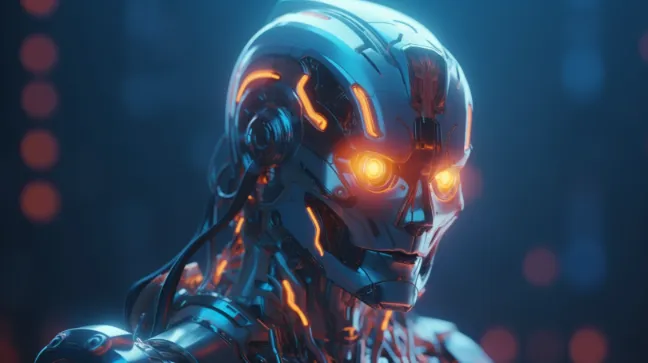In today’s technologically-driven world, the connection between Artificial Intelligence (AI) and employment is one of the most discussed topics. As AI systems and intelligent machines continue to evolve, they are influencing various sectors, including the job market. This article delves into the complex relationship between AI and employment, exploring both the opportunities and challenges it presents.
The Concept of AI and its Role in Employment
AI, in simple terms, refers to the creation of intelligent machines capable of performing tasks that traditionally needed human intelligence. These tasks range from problem-solving and decision-making to understanding and processing language. As the sphere of AI expands, its impact is profoundly felt in different industries, employment being a prime area.
The Upside of AI in Employment
AI’s influence on employment isn’t entirely detrimental. In fact, AI brings numerous positive changes to the workforce. One significant advantage is the automation of mundane tasks, which liberates employees to focus on more intricate work that necessitates human intellect.
Moreover, AI has the potential to augment efficiency and productivity across diverse sectors, leading to enhanced output and profits. Furthermore, the creation, development, and maintenance of AI technologies pave the way for new employment opportunities for individuals possessing specific skill sets.
The Downside of AI in Employment
Despite its benefits, AI’s impact on employment isn’t devoid of negatives. A primary concern is the displacement of jobs as AI and automation technologies replace tasks formerly carried out by humans. This displacement can trigger a decline in demand for certain skills and professions, possibly intensifying economic disparity.
Real-world Implementations: A Closer Look
Many companies and industries have embraced AI, offering invaluable insights into its effects on employment. The transportation industry, for example, is exploring self-driving trucks, a development that could potentially disrupt the livelihoods of millions. However, on a more positive note, AI-powered diagnostic tools in the healthcare sector have not only improved patient outcomes but also created fresh job opportunities for healthcare professionals.
Gazing into the Future: AI’s Prospective Impact
The impact of AI on employment is expected to intensify as technology advances. Some predictions suggest that AI could automate up to 40% of jobs within the next decade and a half. To mitigate AI’s potentially negative consequences, propositions like retraining programs and universal basic income have been put forth as potential solutions.
Anticipating Challenges and Preparing for Change
As we delve deeper into the age of AI, it is essential to anticipate the challenges we might face. One such challenge is job displacement due to automation. While AI can take over monotonous tasks, it also poses a threat to jobs involving repetitive work.
Another challenge is the digital divide, a term referring to the gap between those who have access to technology and those who do not. As AI becomes more prevalent, this divide may widen, leading to greater economic inequality.
However, these challenges are not insurmountable. By understanding the potential issues and taking proactive steps, we can effectively navigate these obstacles.
Retraining and Reskilling
In response to the threat of job displacement, retraining and reskilling programs are pivotal. These programs can help workers whose jobs are at risk to acquire new skills, thereby allowing them to transition into different roles or sectors.
For instance, a truck driver threatened by the advent of self-driving vehicles might be retrained in a related field, such as logistics or fleet management. Similarly, a factory worker whose job is threatened by automation might be reskilled to operate and maintain the new automated machinery.
The Promise of Universal Basic Income
Universal Basic Income (UBI) is another proposed solution to offset the potential job losses caused by AI. UBI is a government program in which every adult citizen receives a set amount of money on a regular basis, regardless of their income or employment status. The aim is to provide a safety net, ensuring that everyone has the means to meet their basic needs, even if their job is automated away.
The Importance of Regulatory Frameworks
As AI continues to influence employment, it’s crucial to establish comprehensive regulatory frameworks. These regulations would govern the use and impact of AI, ensuring ethical considerations are taken into account and that AI doesn’t contribute to further economic inequality.
Conclusion: A Balanced View of AI and Employment
In conclusion, while AI offers many benefits, it also presents significant challenges. The key lies in balancing the benefits of AI and automation, such as increased productivity and efficiency, with the potential drawbacks, such as job displacement and increased economic inequality.
By proactively addressing these issues through retraining programs, considering safety nets like Universal Basic Income, and implementing regulatory frameworks, we can ensure a sustainable and equitable future. As AI continues to evolve, so must our strategies for managing its impact on employment.
Indeed, the future of AI and employment is a complex landscape, fraught with both potential and pitfalls. But with foresight, planning, and a commitment to equitable outcomes, we can navigate this terrain, creating a future where technology serves us all, not just a select few.
Conclusion: Navigating the AI-Employment Landscape
In summary, AI’s impact on employment is a mixed bag, offering both opportunities and challenges. It is crucial for individuals, companies, and societies to proactively address the issues and prospects presented by AI. This approach will ensure a sustainable and equitable future in the face of rapid technological advancement.
It’s evident that AI’s influence on employment is both significant and multifaceted. As we continue to weave AI into our societal fabric, we must balance the benefits of efficiency and automation with the potential pitfalls of job displacement and inequality. Through mindful implementation and thoughtful conversation, we can navigate the relationship between AI and employment, striving for a future that benefits all.






